Announcement: After 32 years at The Grauer School, I recently received my first promotion. I am pleased to announce that I have been promoted from Head of School to assistant surf teacher. I feel I have earned this, though I admit I don’t show up all the time. Plus, I now have a boss who calls me “boss”—Trevor Olson, Grauer’s Athletic Director.
Last week we had heavy rains and could not surf. I loaded up the surfers into the van and went to …a local park. The students selected the park and had numerous, compelling arguments as to why we had to go to this park, not another park, although, later on, they lost the argument over why we had to go out for tacos on the way home. (Next time, kids.)
They were so right about the park. To me, this park was an example of how far Encinitas parks have come. Back in the day, there were no basketball hoops or skate bowls in our parks because the city did not want them to attract teens. Teens were universally viewed as a bad influence on small children and parents, alike, if not a little dangerous.
Shaun, Zane, Lochlan, Leyton, Flyn, Ty, Aidan, Luke, Elsa, and I loaded our skateboards and a basketball into the surf van (underwritten by board member Katherine White), and headed for Orpheus Park in Leucadia. Why Orpheus? Because there are more hoops and better bowls there. And there we hung out being a huge threat to the little kids: just kidding. Our students were every bit as adorable as the little’uns at the park. I mean, in a cool way.
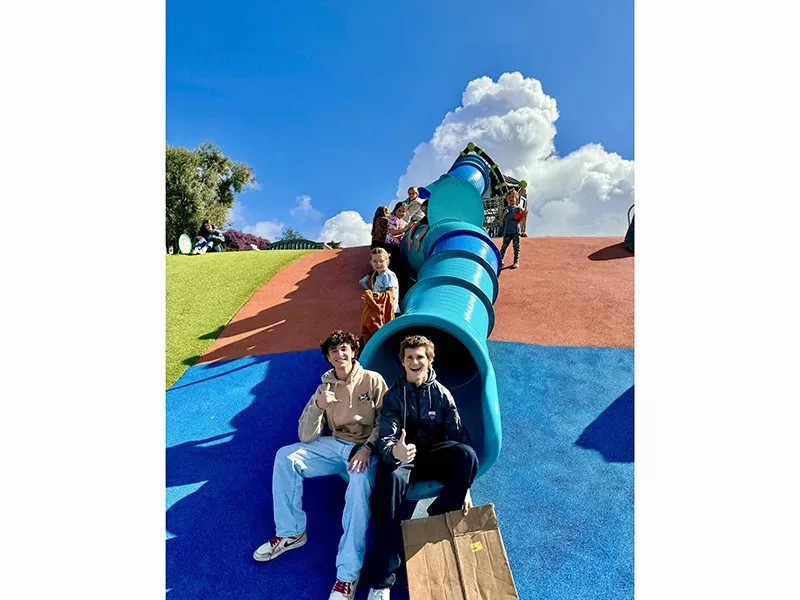
They also met one of my highest aspirations as a teacher: to engage students in pure play. At the park, in play, we met every school core value and actually discussed many of them. That’s pure.
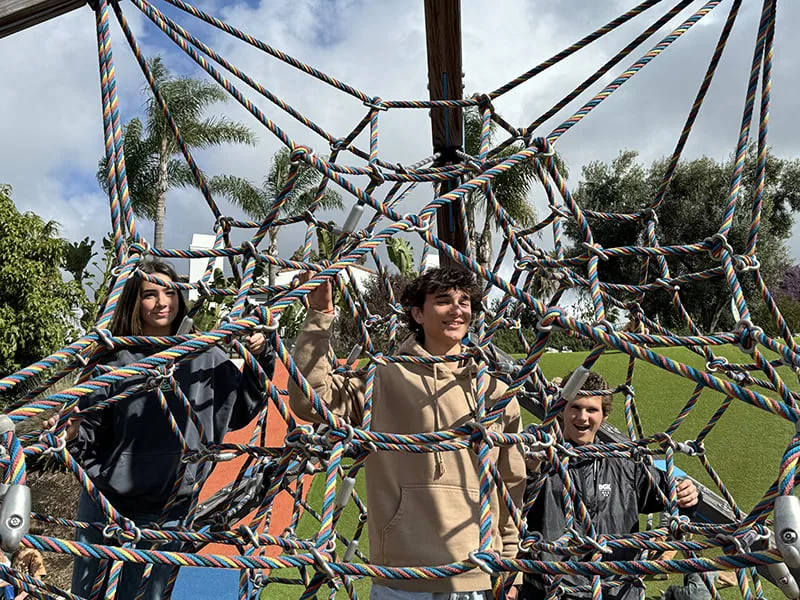
From quite a few past columns, you loyal readers know that a growing number of educators are realizing that play is a critical form of learning and that school, done wrong, is highly effective in discouraging (versus “encouraging”, as per our core values), if not preventing students from engaging and learning at school.
In this short column on play, I’m going to reference one of my favorite teachers, Dr. Peter Gray. (One year, he and I were both keynote speakers at an annual conference of the Alternative Education Resource Organization, and I have loved following his great work.)
Let me start out with the concept of intrinsic motivation, one of the most basic reasons our school exists. This means, essentially, that we do what we do for love, not money. As Peter explains it: “The word amateur is often used to connote that the person is not very good at some activity. But properly, the term has nothing to do with being good at it or not; it has to do with loving it. The word derives from the Latin amare, to love. Think also of the French word amour or the English amorous.”
Peter Gray defines play as: activity that is (a) self-chosen, (b) self-directed, (c) intrinsically motivated, (d) structured by mental rules, and (e) creative. This sounds a lot like The Grauer School core values, which I will put on display for you in photos from Orpheus Park, throughout this column!
Grauer Core Values
-
Resourcefulness
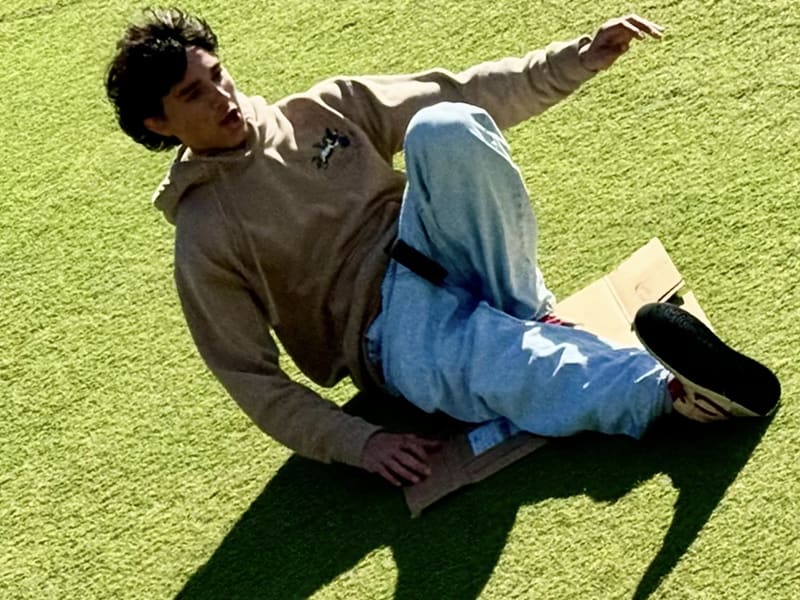
-
Intellectual Curiosity
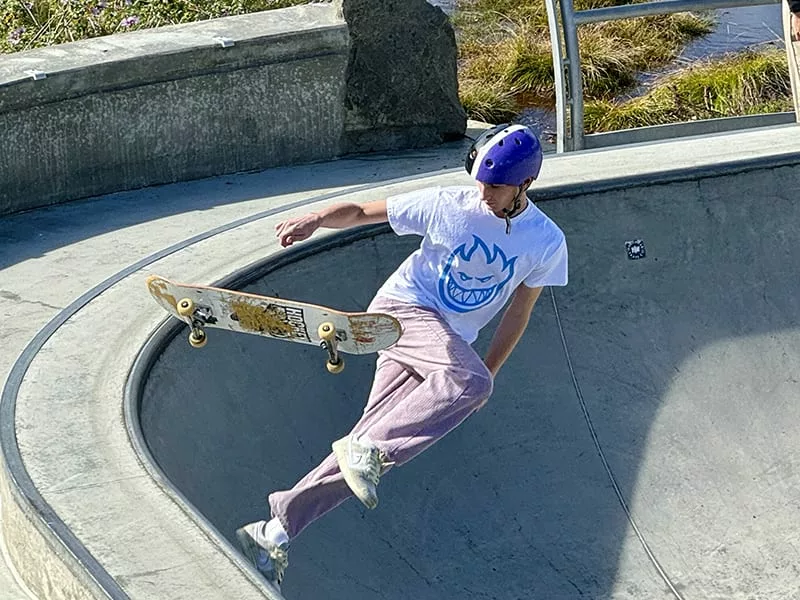
-
Perseverance
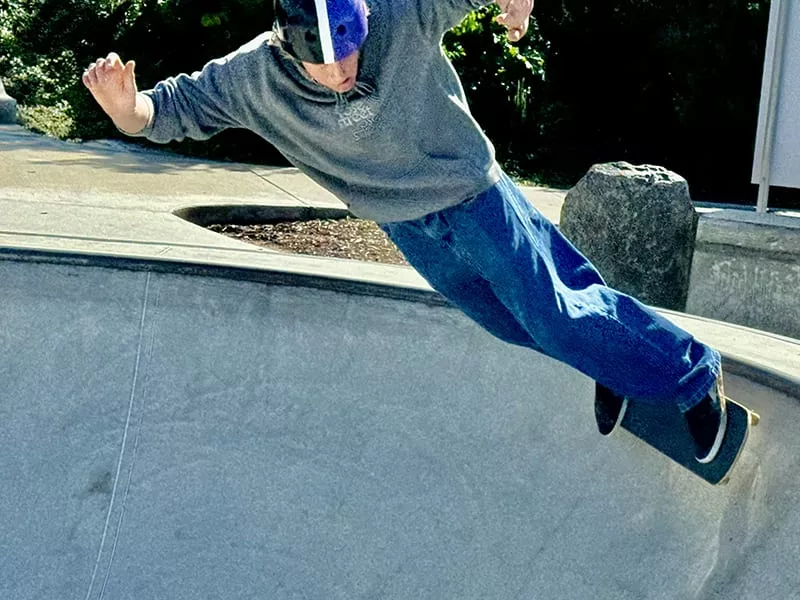
-
Compassion
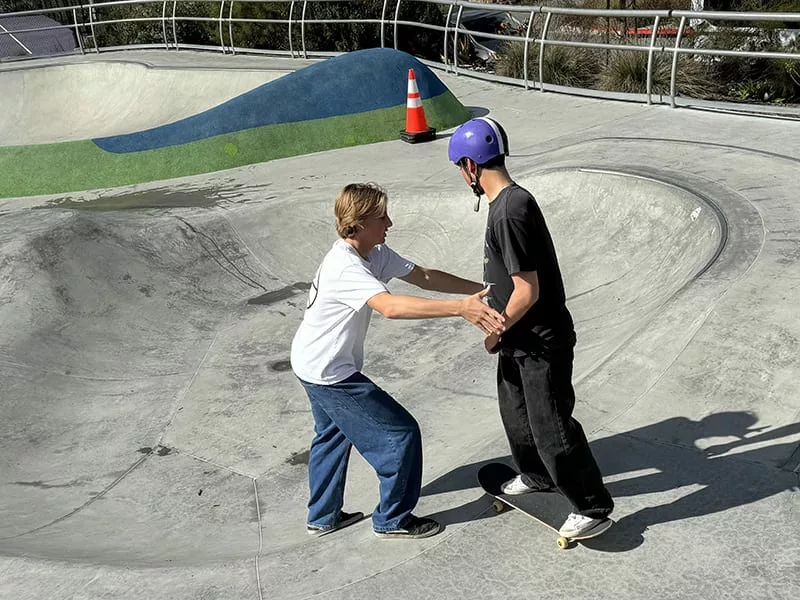
-
Self-Advocacy
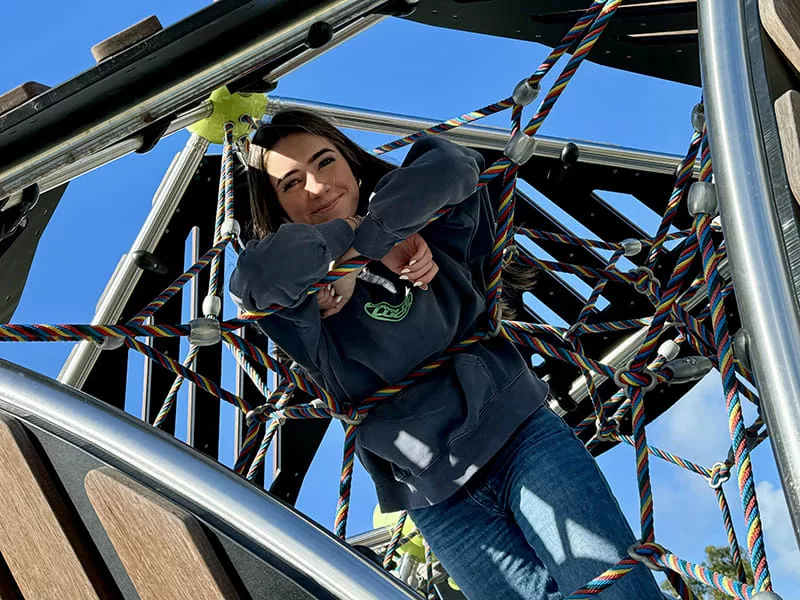
-
Accountability (i.e., to the assistant surf teacher)
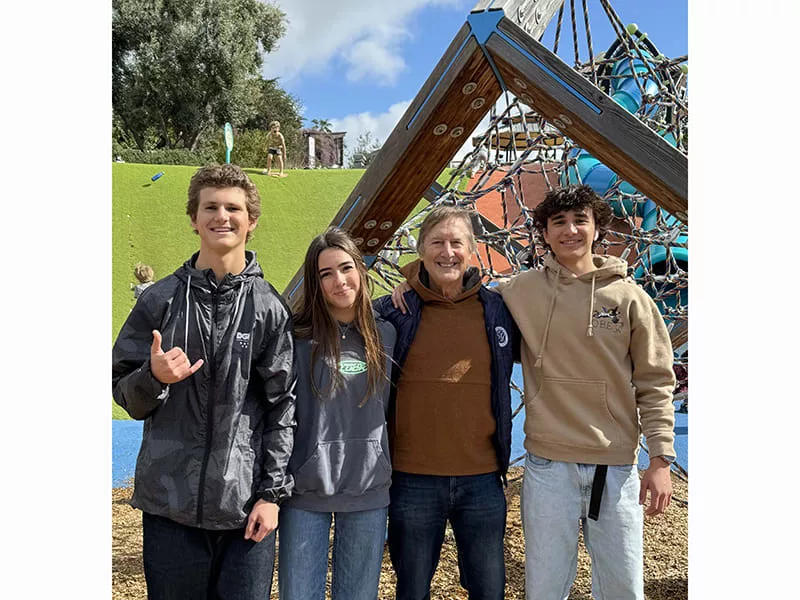
Most school age youths, of course, experience no freedom about being in school or not. They are under the thumb of teachers, who may feel under the thumb of regulators and standards, almost constantly. Students are required to be there all day and often to sit in rows of chairs. All that is one reason why youths rarely experience their schoolwork as play. But what if? What if school could be self-directed and creative? – or at least significant portions of each course of study.
Would self-direction leave our students ill-prepared? Peter describes the classic study of work satisfaction, where “sociologist Melvin Kohn and his colleagues (1990) identified a highly desired constellation of job characteristics that they referred to as occupational self-direction. Jobs high in this quality are those that are (a) complex rather than simple, (b) varied rather than routine, and (c) not closely supervised by others… Kohn and his colleagues discovered that workers who went from a job low in occupational self-direction to one high in that quality not only experienced more pleasure at work but also changed psychologically over time. They became more flexible, less rigid, in their home life and hobbies as well as in their work life.”
When people work for money or grades, they often become experts in knowing exactly how much they need to do to earn that money or grade—and how little. In my work writing these columns, as with teaching surf PE, I think it is probably just the prospect that readers (and students) might feel the same playful attitude I have that is the most inspiring. The thought that these attitudes could be adopted more deeply is incredibly motivating for me and brings me an almost overwhelming sense of joy. I hope you will see this through my camera lens, in the attached photos.
At Orpheus Park, we had both prescribed games and made-up games. We had team games and solo endeavors. Most of my students reached for higher achievements of one kind or another. All of them were engaged and connected constantly, and with assignment and sometimes competition.
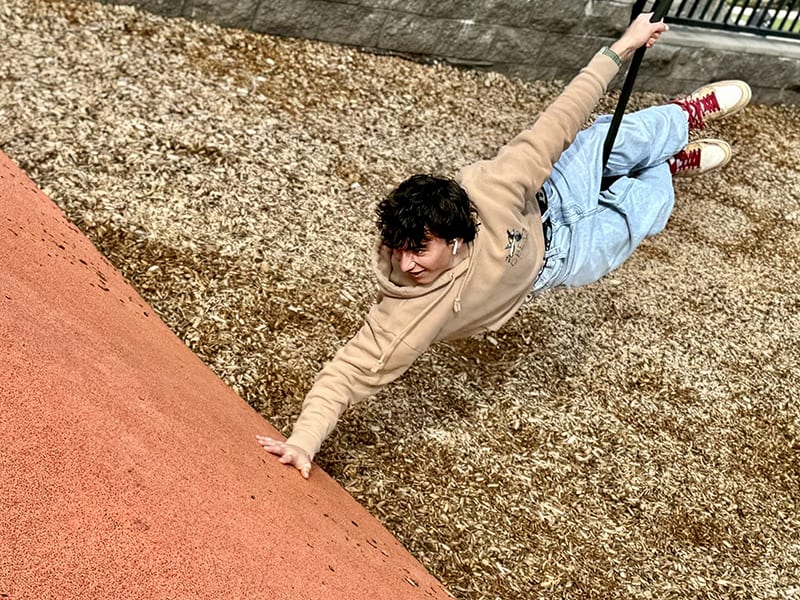
We co-existed with small children and parents, and our teenagers not only were no threat, defying all predictions of park-developers in the previous generation, but they were pure fun. A sizeable group of parents at the park simply could not learn enough about this amazing school where kids actually seemed happy, safe, connected and motivated, and they were excited to learn they could visit.
Small School “Tribe” Model
I think a lot of our playful ways has to do with the small school model, as well. When we maintain tribe-sized groups, our tasks tend to be more varied. In large groups, we tend to get slotted into identities and set roles and assignments. Self-direction is criticized as “chaos,” a trait I actually seek (since kids and teachers gain enormously from resolving it). You’ve all seen these slots or cliques in large high schools in the hallways and lunchrooms: all the groups divided up into their prescribed identities, identities that contain them rather than liberate them.
Peter Gray describes a fascinating example of this: “prior to the nineteenth century, science was not something that a person ‘went into’ to make a living, the way one might go into medicine, or law, or the clergy. There were no institutions for training scientists, no ways of accrediting them, no (or almost no) paying jobs for them. There were just hobbyists and curious seekers—people like Copernicus, Galileo, Kepler, and Newton—coming up sometimes with seemingly crazy or blasphemous ideas that turned out to be true.”
Had they been confined at early ages to disciplines, it seems likely that many of our great scientists would have had nowhere near the creative latitude they’d need to make discoveries. As a kid, Charles Darwin loved being out in nature, collecting specimens. He lost interest in medical school and flunked out of his theology program. At last, he was hired to sail on the Beagle…
Peter cites also that Thomas Edison, born in 1847, was sent to school at age 8, but that he lasted only three months. His teacher sent him home with a note declaring the child had “an addled brain” and was “dense as a stump and virtually unteachable” (Beals, 1997; Clark, 1977). He never returned to school.
You might say that conditions have changed, and we need to prepare more for today’s jobs; however, still today, the most desirable jobs have the qualities of play. They are: (a) complex rather than simple, (b) varied rather than routine, and (c) not closely supervised by others (Peter Gray). Worse yet, many among those who are today’s Edisons or Darwins are medicated or depressed.
Here is the way Einstein described the state of modern schooling, comparing kids to plants: “It is nothing short of a miracle that the modern methods of instruction have not yet entirely strangled the holy curiosity of inquiry; for this delicate plant, aside from stimulation, stands mainly in need of freedom; without this it goes to wreck and ruin without fail. It is a very grave mistake to think that the enjoyment of seeing and searching can be promoted by means of coercion and a sense of duty.” (Einstein, 1949.) Einstein was so undistinguished as a scholar that he was unable to find a teaching job, which is how he ended up working in the patent office, which left him time to privately pursue his love of theoretical physics (as an amateur)—and it could explain how I ended up as a surf teacher (assistant).
Thank you, Peter Gray, for your inspiration, for the above examples, and your research and support in this area. Google Peter to hear any of his captivating lectures.
Work can be play and, when it feels like that, we are often at our best as humans. Twelve students and I found this on expedition after we spent a week in Tanzania with the Hadza tribe. We hunted and gathered with them and, afterwards, learned that they don’t even have a word for work as anything different than play. In the balance of nature, they all teach one another. (Plus, they do no harm to their ecosystem, upon which they depend.)
I am not saying a trip to the park is the solution to all today’s educational challenges. And I am not saying I did not provide guidance, guard rails, and challenges for my students at the park—in fact, I was probing them consistently and keeping a close presence—let’s say they were loosely tethered.
Nor would everything that happened out there at the park or in some of our surf sessions sound great if amplified on our insane social media platforms, which turn age-old teen gestures into shock and appall. (By the way, beware of people who are shocked and appalled.)
You don’t have to be a Hadza tribe member or Einstein to engage in play as work and study. Every course taught benefits from routine, perhaps mildly guided opportunities for open space learning and student choices which make instruction more varied and playful. Here are simple, accessible accessible examples Grauer School teachers use at their best:
Independent (self-selected) research projects
Creative Arts across the curriculum
Problem-Based Learning
Peer Teaching
Independent or Team Technology Exploration in any subject
When we trust that our students are natural learners it is self-fulfilling, especially when we provide space and resources for them. With our support and counsel and with the creation of great learning environments, school is a labor of love.
Join the Small Schools Movement!
Would you like your organization or small learning community showcased in our member spotlight? If you are not yet a member of the Small Schools Coalition, we welcome you to become a friend free of charge.
If you are already a member, contact us to discuss how we can give you the complimentary platform to show the entire world what makes your small school special!

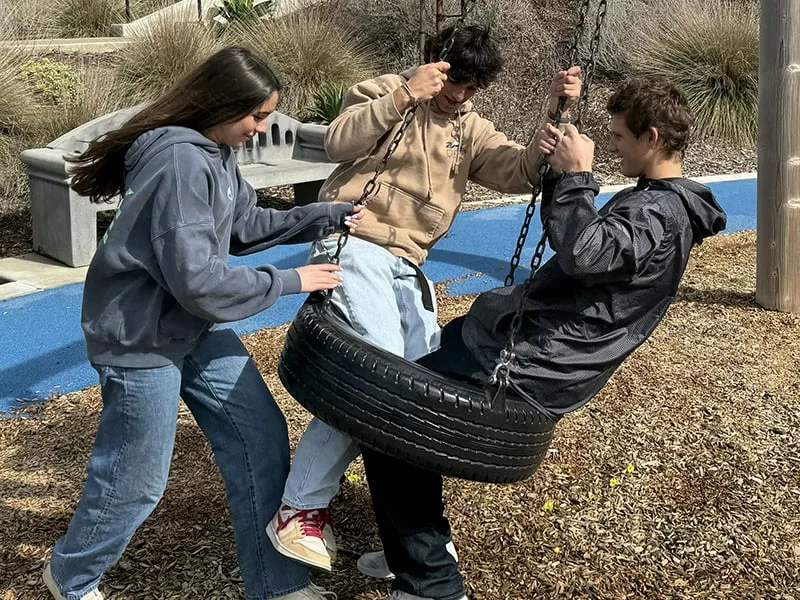
Recent Comments